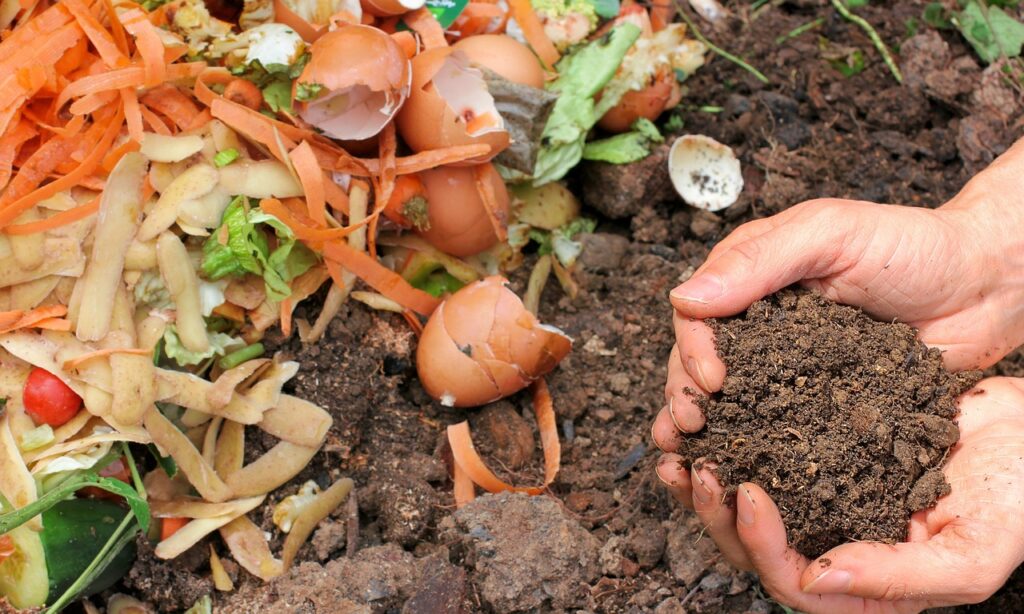A beautiful garden is often the byproduct of something quite unexpected: waste. Yes, you read that correctly. But how can this be? You ask. How can we turn something we discard without a second thought into a treasured asset for our beloved gardens? Well, dear reader, let’s embark on a fascinating journey into the world of composting, where science meets sustainability, and “waste not, want not” takes on a wholly new meaning.
Introduction: A Gardener’s Alchemy
Unlocking the Gold in Garbage
Allow me to paint you a picture: Imagine, if you will, a treasure trove of nutrition just waiting to be tapped into – a sort of alchemy, where what was once deemed worthless, metamorphoses into a gardener’s gold. Yes, it’s time we treat our organic waste not as refuse but as a rich resource. How do we achieve this transformation, you ask? The answer is through the science of composting.
The Nutrient Cycle: A Dance of Decay
Nature’s Ingenious Recycling System
Mother Nature has been in the recycling business long before it became fashionable. At the heart of every flourishing garden is a nutrient cycle, a brilliant ballet where life and decay dance in perfect harmony. But how do we, as caretakers of these green spaces, replicate this wondrous process in our backyards?
- Understanding the Basics
- Nitrogenous Waste: The green materials like fruit scraps and vegetable peels rich in nitrogen.
- Carbonaceous Waste: These are your brown materials such as leaves, paper, and small branches rich in carbon.
- Microorganisms: The silent workers who breakdown the waste into simpler substances, offering a fertile ground for plants to grow.
- Implementing the Science
- Layering: Just like creating a masterpiece painting, you need to layer your compost pile correctly.
- Temperature Control: An essential aspect to expedite the decomposition process.
- Turning the Pile: To infuse oxygen and keep the microbial activity buzzing.
What would happen if we weave these elements together with great care and understanding? The creation of a thriving compost heap that transforms waste into wealth, right in your garden.
Crafting Your Compost Pile: A Step-by-Step Symphony
Building Your Green Gold Mine
Are you ready to roll up your sleeves and immerse yourself in the art of composting? Fear not, for I am here to guide you through a symphonic dance where each step is choreographed to nurture and cultivate a thriving compost heap.
- Choosing the Right Spot: Find a spot in your garden that is neither too sun-kissed nor too shady.
- Gathering Your Materials: Compile a harmonious blend of green and brown materials.
- Layering Your Pile: Begin with a layer of coarse materials, followed by alternating layers of green and brown waste.
- Turning the Heap: Use a pitchfork to turn the heap regularly, introducing oxygen and encouraging microbial action.
- Harvesting the Gold: In due time, your compost heap will transform into a nutrient-rich treasure ready to nourish your plants.
Picture this: a cycle of life that is sustainable, a garden that is nurtured with love and patience, and a world that is a step closer to being waste-free.
Benefits: Beyond the Garden
Sewing Seeds of Sustainability
Composting is not just a hobby; it’s a lifestyle. Through this ecological craft, you are sowing seeds of sustainability in your little corner of the world. You are becoming a part of a solution, a part of a bigger picture. And what could be the rewards for this wonderful endeavour?
- Soil Enrichment: Enhancing the soil structure and its ability to retain moisture.
- Waste Reduction: Decreasing the volume of waste that ends up in landfills.
- Carbon Footprint Reduction: Helping in reducing greenhouse gas emissions.
Do you see the transformation happening, not just in your garden but in your perspective towards waste and sustainability?
Troubleshooting Your Compost Pile
The Gardener’s Detective Work
Even in the best gardens, issues can sprout like weeds. But fret not; consider these as opportunities to put on your detective hat. What could possibly go wrong, and how do we nip these troubles in the bud?
- Foul Odour: Often caused by an excess of wet green material. Balance it with brown materials and turn the pile frequently.
- Pest Infestation: Prevent unwanted guests by avoiding the addition of meat, dairy, and oily foods.
- Slow Decomposition: Boost the process by adding more green materials and ensuring proper aeration.
Remember, every challenge is an opportunity to learn and grow, literally and metaphorically. Ready to embrace them?
Conclusion: A Garden’s Transformation
The Blossoming of a New Perspective
In the grand scheme of things, your garden becomes a microcosm of the universe, where every element has a role to play, where waste finds a new purpose, and where you, the gardener, become the maestro conducting an orchestra of life and decay, harmony and balance.
So, as you stand amidst your blossoming paradise, can you see the metamorphosis? Can you feel the rhythmic dance of life and decay? Can you smell the rich, earthy fragrance of success?
Key Takeaway
Through the science of composting, you are not only nurturing a garden but fostering a more sustainable, greener future. You’re transforming waste into wealth, fostering a little revolution in your backyard, and indeed, cultivating a richer life.
Feel the rhythm of the earth beneath your fingertips, hear the whispers of leaves sharing secrets with the wind, and witness the breathtaking artistry of nature unfolding in your very garden. Composting is more than a gardening technique; it’s an ode to the harmonious cycle of life, an open invitation to be a gardener, an artist, a scientist, and a guardian of this beautiful planet we call home.
Dear reader, are you ready to step into this wondrous journey? Are you ready to transform not just your garden but your world?
Happy Composting!



